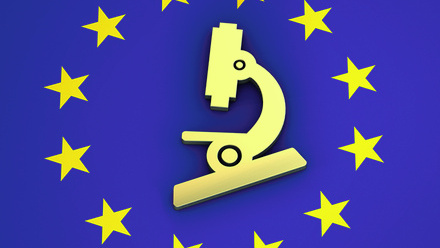Intellectual property for brands - all you need to know
Solicitor Elizabeth Dennis of Marks & Clerk Law LLP looks at how you can protect your brand and develop your brand strategy.

The branding of goods and services is prominent in nearly every commercial sector and industry, with a brand having the potential power of global recognition and reputation, distinguishing a business from its competitors and influencing consumer habits. The value of a brand cannot be overlooked and investment in intellectual property (IP) is key, not only for hard IP, namely patents, but also in the creation of soft IP, through the development, protection and enforcement of trade marks, copyright and design rights.
As well as having strong brand identity, a strong brand strategy is important for ensuring commercial growth and consumer loyalty. By considering brand strategy, the long-term plan for the development of a brand and the specific goals that a business can strive towards, owners can maximise a brand’s potential while minimising exposure to risk. From the creative launch and initial protection of a brand, to owners using and enforcing their IP rights, there are many different stages and factors worth considering.
Creation
Branding can take many different forms including singular words, straplines, logo designs, product designs, colour schemes and marketing materials. The development of a new business, product line, invention or industrial design may lead to the creation of new brands. It is important that the launch of a new brand does not encroach on any third-party rights and, to avoid potential disputes, particularly in the field of trade marks for brand names and logo designs, clearance searches should always be carried out in the first instance. Additionally, future areas for growth should be considered and the expansion of a business or product range into new sectors.
Protection
Once a new brand has been decided on, the next step for developing brand strategy is to consider protection of the brand to prove ownership, exploit IP rights and enforce them where necessary.
While protection is offered to trade marks, logos and designs that have not sought formal registration, the criteria for claiming protection in such rights can sometimes be more onerous to meet and strict time limits can also be potentially problematic. By seeking registration of patents, trade marks and design rights through the Intellectual Property Office and actively reviewing their IP portfolios, a brand owner can have a clear understanding of their brand, their IP portfolios and the budgets required to maintain and grow the same.
It is important for brand owners, whether they be individuals or businesses, to keep records of design drawings and original marketing materials. These documents can be very useful tools in asserting a brand owner’s earlier rights. Copyright will automatically arise in original artistic drawings, and whether these are in relation to a new product line, logos, advertising materials or presentations, good record keeping of key documents can be critical to ongoing brand protection.
Usage
Once a brand has been established and the necessary steps have been taken to protect it, owners may wish to consider how they can use and exploit their brand, either through their own direct use or through commercial arrangements such as licences. By entering into licences with third parties, a brand owner can strategise expansion while maintaining control as to how the brand is used, marketed and delivered to consumers. It may also be the case that once a brand has built up significant goodwill, its associated value becomes attractive to others. By selling a brand, its owners can sometimes enjoy significant financial return on their initial investment and strategy.
Enforcement
A key part of brand strategy is the steps taken by an owner to ensure the brand’s reputation and longevity. By closely monitoring the market, competitor activity and new developments, a brand owner can take action when confronted with competitors that have adopted an identical or highly similar brand. One way of monitoring new brands is to keep an eye on new trade mark registrations that are filed or new company names. By allowing identical or highly similar brands to enter the market without taking action, a brand owner faces the risk of their brand becoming diluted and its enforceability being called into question.
A brand, through its reputation, often reassures consumers as to the quality of goods and services being provided. However, counterfeiters seek to ride on the coat tails of a brand’s success, so vigilance must be maintained not only for the purpose of commercial protection but also consumer protection.
By taking an active approach to the development and implementation of brand strategy, owners can allow themselves the opportunity to enjoy great success and provide invaluable protection to their creative and commercial ideas.







